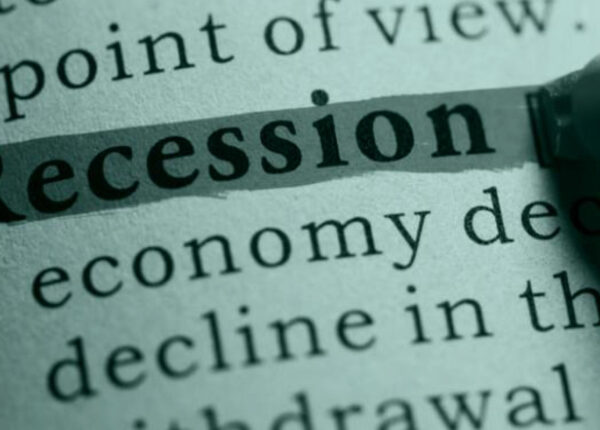All News is Good News, Even if it is Bad?
For a number of years we have witnessed asset markets in which there seems an unshakeable confidence in their continued upward movement. Whatever vicissitudes may unfold, the comfort blanket of government support has sustained the view that “the cavalry will always arrive”. The outbreak of the Covid-19 pandemic was met with a wall of money from central banks and governments. In the US alone the Federal Reserve’s support amounted to almost $4tn, not to mention the trillions of additional government expenditures. As a rule of thumb, $1tn is roughly 5% of US GDP, so $4tn sums to more like 20%. In the ‘old days’ a 5% fiscal deficit gave cause for concern. Yet today, even the IMF, once the bastion of fiscal rectitude, is canvassing for larger fiscal injections.
The market’s buoyancy has been much in evidence in the last few weeks. First, we had a rally based on the idea that a Biden-led ‘blue wave’ sweep of Congress would herald an even larger fiscal impulse. We then had a rally that business friendly President Trump would after all remain in power, followed by a further uplift when it seemed that a Republican Senate would restrain the excesses of the Democrats. No matter that these three impulses were somewhat contradictory. Finally, we had the news that a vaccine had performed well in tests and that too sent the markets higher.
One could perhaps excuse this exuberance if markets were already at depressed levels. They are not. Although a poor market timing predictor, the cyclically adjusted or ‘Schiller’ price/earnings ratio (CAPE) has a long history of anticipating medium term stock market behaviour and provides valuable context on current equity valuations.
- The current CAPE is two standard deviations above normal
- Historically there are only two periods where this has been seen before, prior to the TMT crash and 1929 crash
- On previous occasions where the CAPE has been one standard deviation away, the market declines which followed have ranged between 24% and 85%

Of course CAPE, like any valuation metric, needs to be treated with caution. The most important caveat is that if we are at the beginning of a significant and extended cyclical upturn in the economy, the CAPE will come down automatically as earnings rise and replace lower historic figures. A high valuation would be less concerning if this stabilising factor was likely to bring valuations back below previous periods. It is hard to see why this is likely however, for several reasons:
The last earnings per share data point in the current CAPE calculation precedes the COVID-19 outbreak;
- Public and private debt worldwide is at historic highs and rising;
- Interest rates have only been held at historic lows by massive intervention;
- Free trade is under threat and supply chains look unlikely to become more efficient;
- The demographic factors which have contributed to current market strength are no longer supportive
So while the political backcloth is one of accommodative fiscal and monetary policy almost everywhere around the world, the ability to stretch support further with either monetary or fiscal measures is extremely limited. It also remains wholly dependent on the desire of investors to fund government spending at negligible or negative rates of return.
It is possible, just about, to formulate a scenario which allows a return to more normal valuations without a significant decline. Similarly, it is possible to create a framework that justifies current asset valuations. The snag is that both outcomes require conditions that we have never witnessed before and depend on highly contorted arguments. They are reminiscent of the types of explanations that were deployed to justify Japanese valuations in the late 1980s when the Nikkei seemed impervious to logic and defied expectations, to the point where it was just accepted by many investors that Japan was somehow ‘different’, and by implication therefore, valuations, however absurd, were sustainable.
The alternative explanation for current asset market levels is much simpler. It has been official government policy in the major economies since the global financial crisis to boost asset prices. It has worked remarkably well, to the point that governments now are terrified of the outcome should their support be withdrawn. Asset market participants have known this for some time and have come to perceive markets as having asymmetric risk, with downside risk effectively being underwritten by the certainty of renewed support in the case of any weakness. The fabled ‘Greenspan put’ is not only alive and well but has been extended to cover almost all types of assets.
Given this background, the trajectory and resilience of most asset prices is therefore no surprise. What is perhaps a surprise is how long the post-crisis policy has been able to run, and the levels that asset prices have been able to achieve. The main bumps in the road have come when investors start to fear that support will be withdrawn, as happened with the so-called ‘taper tantrum’. The condition of the global economy has also helped, in the sense that inflation has remained subdued and we have not yet seen wholesale defaults from leveraged credit. This has allowed providers of credit to remain relatively sanguine even as leverage has increased and covenants have weakened, both to dangerous levels. In the eyes of policymakers, flooding the markets with monetary and fiscal stimulus appears miraculously to have had no discernible downside.
The fact that asset price rises have been sustained for so long is not itself a validation, and does not mean that we can avoid a valuation-based reckoning in the end. One day the elastic will be stretched too far and it will snap. When that happens, the high correlation between asset classes in these new normal conditions means that there will be few places to hide and huge difficulty in preserving capital. The most likely trigger will be a reversion to more normal levels of real yields, driven either by fears of inflation or by increasing defaults on credit instruments. It is important to emphasise that while these would be the triggers, it is high and unsustainable valuations which will be the root cause.
What we don’t know is the timing of when this will occur, although we can be reasonably confident that it is becoming more likely by the month. What we do know is that, given the importance they have attached to them as economic indicators, governments will use any and all available tools to try and avoid disruption to asset prices. Even if governments/central banks wanted to withdraw support and manage asset prices down to more reasonable levels in a controlled manner, political realities would almost certainly make them reverse course before the process had begun in earnest.

Source: https://www.federalreserve.gov/monetarypolicy/bst_recenttrends.htm
Consider what has happened to the Federal Reserve’s balance sheet since the crisis, shown in the chart above. It was levelling off before the pandemic hit earlier this year, but since then it has taken another quantum leap higher. The response to COVID-19 has had a dramatic effect on the US fiscal deficit. Figures from the Congressional Budget Office show an estimated deficit of 15% of GDP in the current fiscal year. This is the fifth consecutive year of rising deficits during a period when the robustness of the US economy has been a matter of pride for the White House. Note also that this debt level does not include the support packages that were being debated between the White House and Congress in the run up to the election. With the debt/GDP ratio in the US now over 100%, at some point thoughts will be forced to turn to how this seemingly inexorable rise can be stabilised and reduced, notwithstanding that now even the IMF is a cheerleader for further global fiscal expansion.
As the debt burden rises and inequality increases, at some point thoughts will have to drift towards how fiscal balance can be achieved. Already we are seeing various think tanks publishing papers which illustrate the magnitude of tax rises that will be required. Thus far markets have been willing to ignore the future tax consequences and concentrate on the joys of current largesse. This is a temporary state.

To summarise, therefore, the analysis advanced here underpins the direction of the trust’s portfolio. Equities, in common with other asset classes, are at historically high valuations. Government support is beginning to reach its limits and the inflationary consequences of funding support by printing money must eventually play out. This is increasingly an environment in which capital preservation needs to take precedence over short term performance. For this reason we have been gradually reducing the equity exposure and raising liquidity. The market rises have become increasingly concentrated on a narrow range of technology securities where there are significant valuation risks. The portfolio has some exposure in tangential areas and we have gradually been trimming. The remainder of the equity portfolio is primarily in companies at reasonable valuations with defensive businesses such as Health Care and Telecoms. There is cyclical exposure in the form of Banks and Energy but this is relatively limited.
Given the potential for inflation we have split the liquidity by investing a portion in US Treasury Inflation Protected bonds (TIPS). We anticipate that liquidity may have to increase further, given some of the recent vaccine-inspired exuberance. Just to give some context, the current level of liquidity is back to where we reached in 2007/08 as the global financial crisis unfolded. In this chart ‘cash and others’ refers to the cash and TIPS.

There are rare occasions when discretion is the better part of valour and with the levels of global debt and asset valuations this is one of them. It is hard to remember a time, when against such a backdrop, investors have been so positive. We know this is a contrarian view, but it is one that directly follows from our analysis. We firmly believe that liquidity we are now building will leave us in a very strong position for the future, providing the firepower to take advantage of the opportunities that will inevitably emerge.
See the latest factsheet
https://globalopportunitiestrust.comshareholder-information/monthly-factsheets/
For information on the distribution of assets see the website
https://globalopportunitiestrust.comportfolio-and-performance/distribution-of-assets/
Important Notes
The information and opinions contained in this document are the personal views of the author and are subject to change without notice. The information set out herein may be subject to updating, completion, revision, verification and amendment at any time and such changes may be material. No reliance should be placed on the opinions contained herein. Edinburgh Partners shall not have any responsibility or liability for any loss howsoever arising from any use of this document.
The value of an investment and the income from it may go down as well as up.




